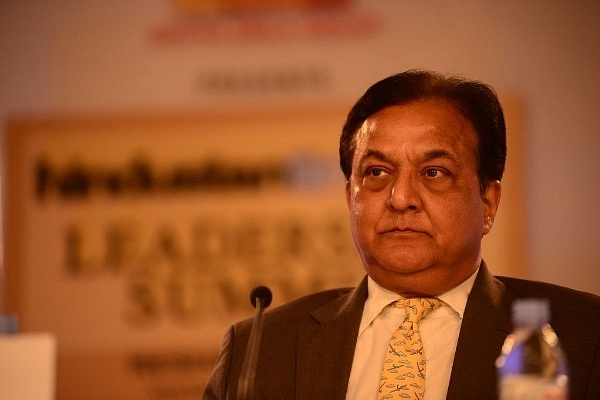Economy
RBI Must State Upfront Why It’s Asking CEOs Like Yes Bank’s Rana Kapoor To Go
- The RBI is not exempt from giving us its reasons for nudging two of India’s most celebrated bank CEOs towards the exits, when both have delivered huge shareholder value.

Rana Kapoor of Yes Bank (Pradeep Gaur/Mint via Getty Images)
In September 2014, the Reserve Bank of India (RBI) capped the retirement age for private bank chief executive officers (CEOs) and whole-time directors at 70 since there was no cap earlier. But, inexplicably, over the last few months, it has directly or indirectly given the marching orders to two high-profile CEOs – Shikha Sharma at Axis Bank, and now, Rana Kapoor of Yes Bank. Kapoor, who has been asked to leave by January 2019, also happens to be one of the promoters. Both of them are approximately a decade away from that age limit set by the RBI for CEOs.
It is nobody’s case that if any CEO has been found indulging in skulduggery or anything fishy, she or he can be asked to go. But in both cases, the central bank has not chosen to tell us if there is a good reason to ask them to go, or whether it is asking for their heads merely on the basis of some doubts it entertains about their suitability for these posts.
It is also nobody’s case that iconic CEOs should not be questioned about their succession plans – or forced to create one. CEOs who are closely identified with the success of their outfits tend to remain at the helm for too long, and this is not good for organisational stability. But if this is the reason the RBI wanted Sharma and Kapoor to move on, one can point out that the same is the case with HDFC Bank, where there is no visible successor to Aditya Puri, who has been at the top for nearly a quarter-century. His term ends in 2020.
Transparency is key to good regulation, and the RBI is not exempt from giving us its reasons for nudging two of India’s most celebrated bank CEOs towards the exits, when both have delivered huge shareholder value.
To be sure, in both banks, the Reserve Bank’s estimation of bad loans was much higher than those of their respective managements, but if this is the reason for asking the CEOs to go, it must be stated upfront. Not only will this send a powerful message to all bank CEOs that bad loans must not be ever-greened or kept under wraps, but would also make the RBI’s actions more transparent.
A regulator cannot hide behind its own nebulous definition of which promoter or top management professional meets its definition of “fit and proper” any more than bank CEOs can decide which bad loan to recognise (and which not to), depending on circumstances. Without clarity on what it means by fit and proper, the RBI’s actions may well seem whimsical to outsiders.
In a notification dated 23 May 2011, the Reserve Bank announced an information format which directors seeking appointments on bank boards have to submit in order to be declared “fit and proper” for the job. The format, which seeks information on basic personal details (name, address, PAN number, etc), professional qualifications, knowledge of banking laws, possible sources of conflicts of interest (relationships of self and relatives with the bank), and legal and regulatory proceedings against the person, is comprehensive enough for the RBI to monitor and decide on a person’s suitability.
Given this, one would have thought that it should be giving clear reasons for asking CEOs to move on. In the case of Chanda Kochhar of ICICI Bank, where there have been allegations of conflict of interest in loans sanctioned to Videocon Group, the RBI failed to detect any such problem when it probed the bank in 2016. It moved only when the entire issue was aired in the newspapers in mid-2018. In fact, rarely has the RBI stepped in to prevent a bank scam when it was possible to do so. Most actions have followed a meltdown or adverse media publicity.
Perhaps the RBI does not give reasons for its actions in order to avoid litigation. If, for example, it were to state that Kapoor has to go because of lapses of a specific nature, Kapoor has the option of moving the courts for justice in case he believes he is innocent. By not giving reasons, the RBI can avoid explanations for its actions.
But the RBI cannot operate on the principle that its actions need no justification. That is not the way to go. Transparency is as important in a regulator as in the persons it seeks to vet for sensitive postings in banks.
Support Swarajya's 50 Ground Reports Project & Sponsor A Story
Every general election Swarajya does a 50 ground reports project.
Aimed only at serious readers and those who appreciate the nuances of political undercurrents, the project provides a sense of India's electoral landscape. As you know, these reports are produced after considerable investment of travel, time and effort on the ground.
This time too we've kicked off the project in style and have covered over 30 constituencies already. If you're someone who appreciates such work and have enjoyed our coverage please consider sponsoring a ground report for just Rs 2999 to Rs 19,999 - it goes a long way in helping us produce more quality reportage.
You can also back this project by becoming a subscriber for as little as Rs 999 - so do click on this links and choose a plan that suits you and back us.
Click below to contribute.
Latest